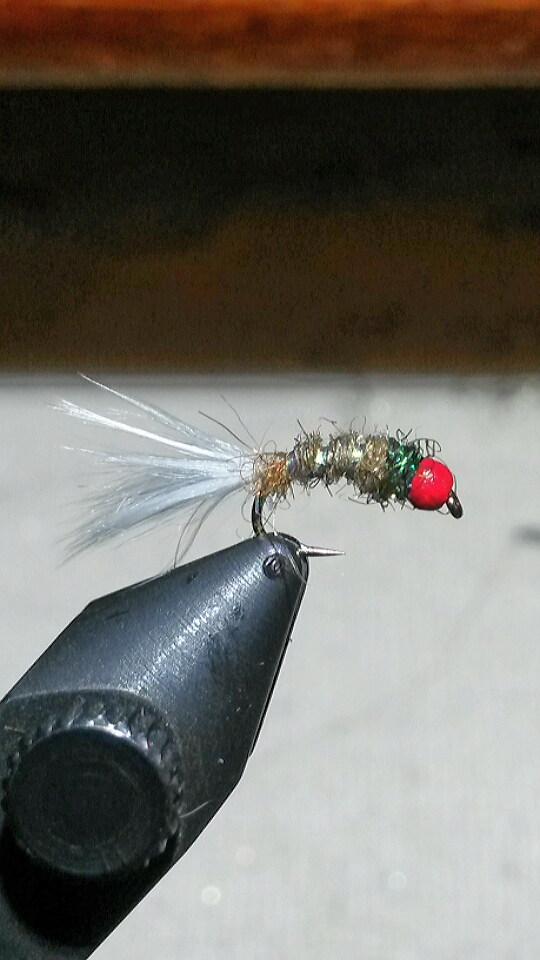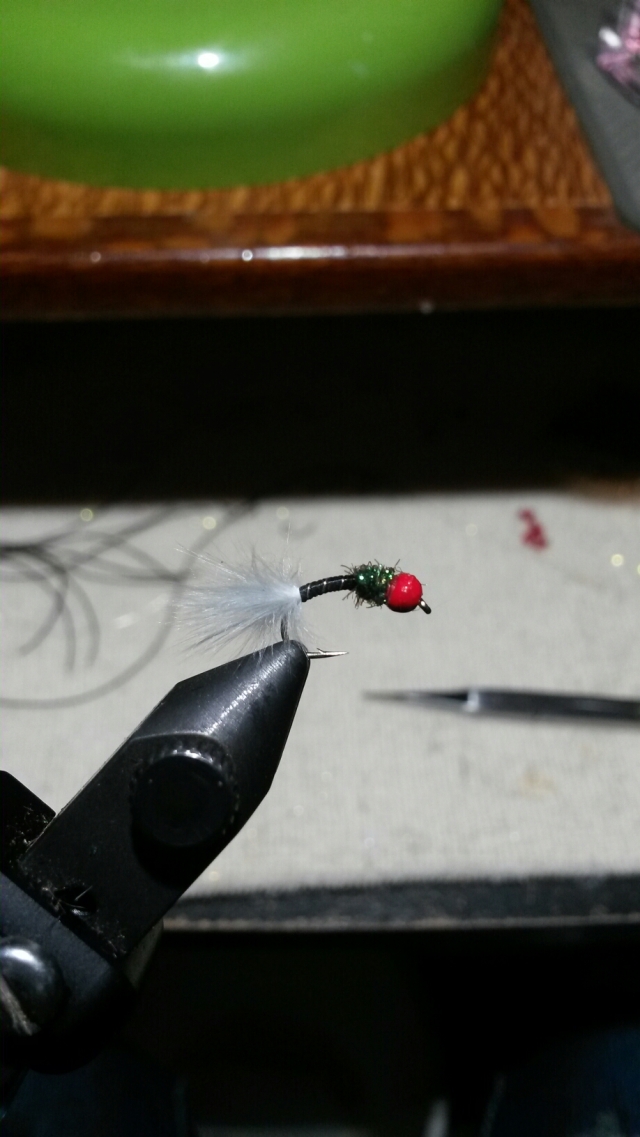Soft Hackles and Spiders.
As most of you may know the origination of soft hackle and spider fly patterns originated in the UK, all be it that is not totally true as flies of this nature were also used in other parts of Europe. Fact of the matter is such flies formed from silk thread bodies, at times a body formed from animal fur and a hackle wound at the head became known and from that time on are now considered by many fly fishers essential to have in the fly box, no wonder as they are some of the most effective fly patterns to catch trout in any water they are found. Be it a large lake or a micro small creek.
Provided you choose the right fly and present it in a natural manner.
Flies of this category may be fished at any depth in the water column to the surface, by many methods, be that dead drift or with animation. However it is when fish are seen feeding close to the surface or fishing over shallow water runs and slower back water eddies that these flies really hold their own against others, here again provided you choose the right fly and present it in a natural manner.
Which in my book means dead drift with some semblance of life imparted to the fly. Trout do not see midge and mayfly emergers swimming upstream, they await the nymphs, emergers, duns, spinners moving towards them and that is the essence of fishing these flies, in a natural drift. Granted in the case of caddis there may be a greater animation of the natural pupa/emergers and here is may well pay to enhance movement of the fly to attract the trout’s attention.
For many anglers fishing soft hackles amounts to simply casting the fly across the stream and striping it back, granted this may well catch fish, saying that it is not by any means the way to accomplish skills that will ultimately catch you many more fish, and that is the crux of the matter.
Rods/Reel/Lines.
The rod is very much an integral part of being able to fish soft hackle and spider flies to good effect. The ideal rod should have a soft tip and a mid flex action, fast action rods are not the way to go here. Rod length ideally 10ft all be it l also use 11ft rods. And there are reasons why l choose long soft action rods. Rod action is related to how you are able to impart movement to the flies, often the take of the fish can be fast and hard and you need a rod to absorb that initial shock, you may well hook a large fish, often you will be fishing with small hooks and light X leaders, once again the rod acts as a shock absorber. When fishing combinations or teams of flies you also need a rod that allows a slower wider casting stroke, that reduces tangles,line speed is reduced and softer presentations are the result. Granted there may be situations such as fishing small creek with heavy vegetation that limits rod length. My preference is for rods that carry 3 /4 wt lines.
Lines.
When l started to fly fish silk lines were still the most popular lines used, and there is no doubt that they have values over and above modern lines, finer diameter for the wt, they impart better movement of the flies and due to their suppleness move in sequence with the water’s surface. Downside is you have to maintain them and the will cost you close to $200.
Modern lines tend to be stiff and wiry, therefore lighter weight lines should be chosen, 2 to 4wts, 3 is overall my choice here and a double taper profile or at least a long forward tapered WF profile. Heavy forward WF lines are not the way to go. Distance is not the issue here, its presentation values, neither do you want the increased drag effect that WF lines create, due to the forward weight and diameter of the line.
You need all in your favor to be able to allow the flies to dead drift in a natural manner as close as you can to the fly if it were not attached to your leader. In other words as it would by natural stream drift and movement.
Color of line, l prefer white for l can see it at all times. There are those who argue that white lines spook fish, that’s not my opine, any line will spook fish if you cause its presence to be known either in the air or on the water’s surface. You do not cast a fly line to the fish, you cast the fly separated from the line by a leader and that’s what the fish should see. And that also includes the absence of your presence to the fish.
Leaders and tippet.
If your choice is to use a factory tapered leader and add additional ok. My way is to build my systems to suit my needs which may differ depending on chosen presentation methods largely based on the nature of the water fished and the trout’s feeding pattern at the time. That may also be related to time of year, water temperature and time of day.
More or less l build from the fly line a butt section using clear Amnesia and add to that my additional leader to which the fly or flies are attached. In the case of more than one fly then detached a dropper is used.
Fishing.
Not enough room here to discuss this. Other than in the case of soft hackles and spiders look at it like this. They should be fished dead drift, by the same manner as you would fish a nymph, dry or emerger with an initial upstream presentation most certainly to fish you can see feeding in the surface levels. Your indication of the take is either watching the trout move to the fly or a movement of the leader/tippet, granted this takes practice and demands from you perfect line and drift control to start with, secondly you must maintain your sight in the known zone the flies are at. Once your flies are in a position well across and down then a slow retrieve across stream will often promote a take. It is not a strip type retrieve as you would use for a streamer, remember these are small sparse flies and you need the fish to see them.
Flies.
Years back flies were fashioned from natural materials, fur and feather, to-day we have a wide range on synthetics which to some extent allow for to increase the range fly patterns, at least so far as body materials as almost all soft and spider flies use a natural bird hackle, that what makes the fly come to life.
So far as what pattern to use. Many are related to species, such as BWO, March brown, Sulphurs and so on.It pays to take account of this for your choice of fly if they are present on the water you fish or know to be found in that body of water. On the other hand there are many other combinations that are more generic, also wise to carry those.
My own personal choice is to use flies that are more closely related to species, for the reason that it gives me a far better background knowledge of what to use and when.

Spiders and Soft Hackles- tied by: Davy Wotton (for posting in Davy and TBird Fly Fishing Journal)
If you have further interest to improve your soft and spider fishing then you might choose to obtain my Wet Fly Ways DVD, as that covers most of what you need to know rigging and fishing wise. I also offer a wide range of soft hackle and spider fly patterns.
The flies shown are DW Fidgets, sizes 18/20. Used for dead drift when small midges and May-fly are of interest to the trout.
Davy Wotton
Posted by Teresa “TBird” VanWinkle on February 28th, 2013








You must be logged in to post a comment.